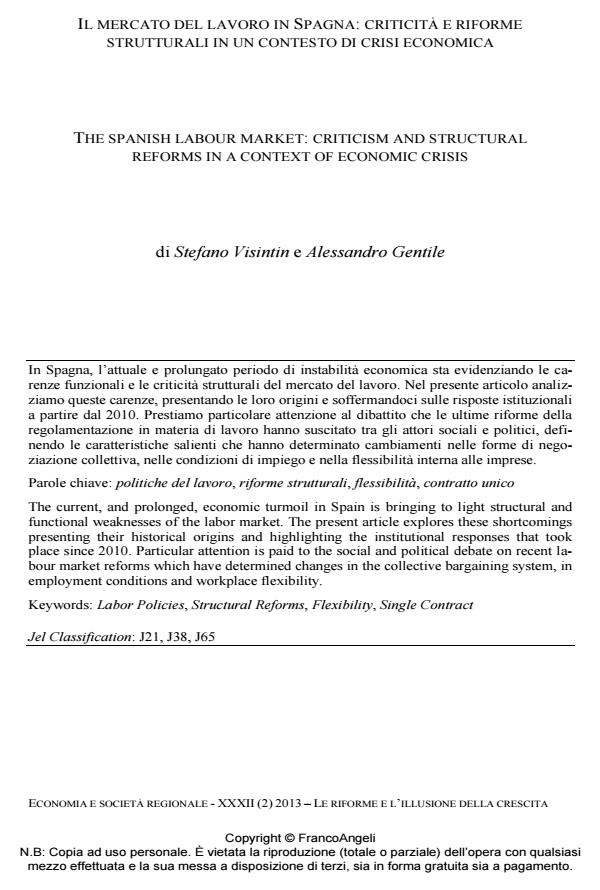Il mercato del lavoro in spagna: criticità e riforme strutturali in un contesto di crisi economica
Titolo Rivista ECONOMIA E SOCIETÀ REGIONALE
Autori/Curatori Stefano Visintin, Alessandro Gentile
Anno di pubblicazione 2013 Fascicolo 2013/2
Lingua Italiano Numero pagine 21 P. 65-85 Dimensione file 719 KB
DOI 10.3280/ES2013-002004
Il DOI è il codice a barre della proprietà intellettuale: per saperne di più
clicca qui
Qui sotto puoi vedere in anteprima la prima pagina di questo articolo.
Se questo articolo ti interessa, lo puoi acquistare (e scaricare in formato pdf) seguendo le facili indicazioni per acquistare il download credit. Acquista Download Credits per scaricare questo Articolo in formato PDF

FrancoAngeli è membro della Publishers International Linking Association, Inc (PILA)associazione indipendente e non profit per facilitare (attraverso i servizi tecnologici implementati da CrossRef.org) l’accesso degli studiosi ai contenuti digitali nelle pubblicazioni professionali e scientifiche
In Spagna, l’attuale e prolungato periodo di instabilità economica sta evidenziando le carenze funzionali e le criticità strutturali del mercato del lavoro. Nel presente articolo analizziamo queste carenze, presentando le loro origini e soffermandoci sulle risposte istituzionali a partire dal 2010. Prestiamo particolare attenzione al dibattito che le ultime riforme della regolamentazione in materia di lavoro hanno suscitato tra gli attori sociali e politici, definendo le caratteristiche salienti che hanno determinato cambiamenti nelle forme di negoziazione collettiva, nelle condizioni di impiego e nella flessibilità interna alle imprese.
Parole chiave:Politiche del lavoro, riforme strutturali, flessibilità, contratto unico
Stefano Visintin, Alessandro Gentile, Il mercato del lavoro in spagna: criticità e riforme strutturali in un contesto di crisi economica in "ECONOMIA E SOCIETÀ REGIONALE " 2/2013, pp 65-85, DOI: 10.3280/ES2013-002004